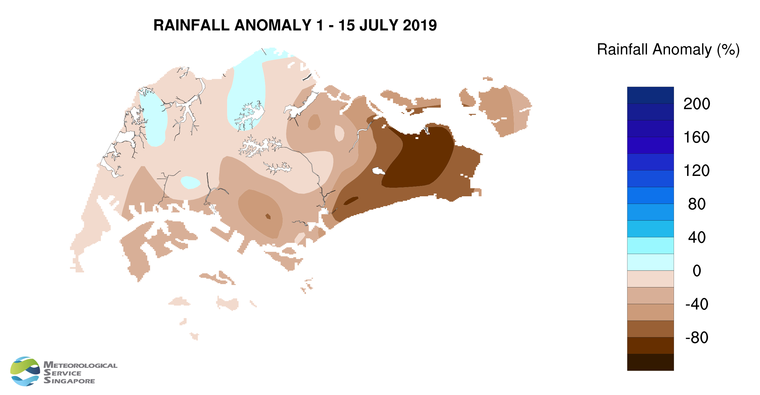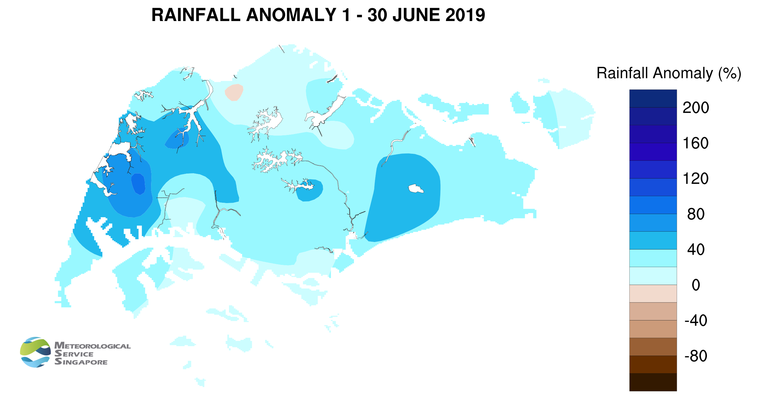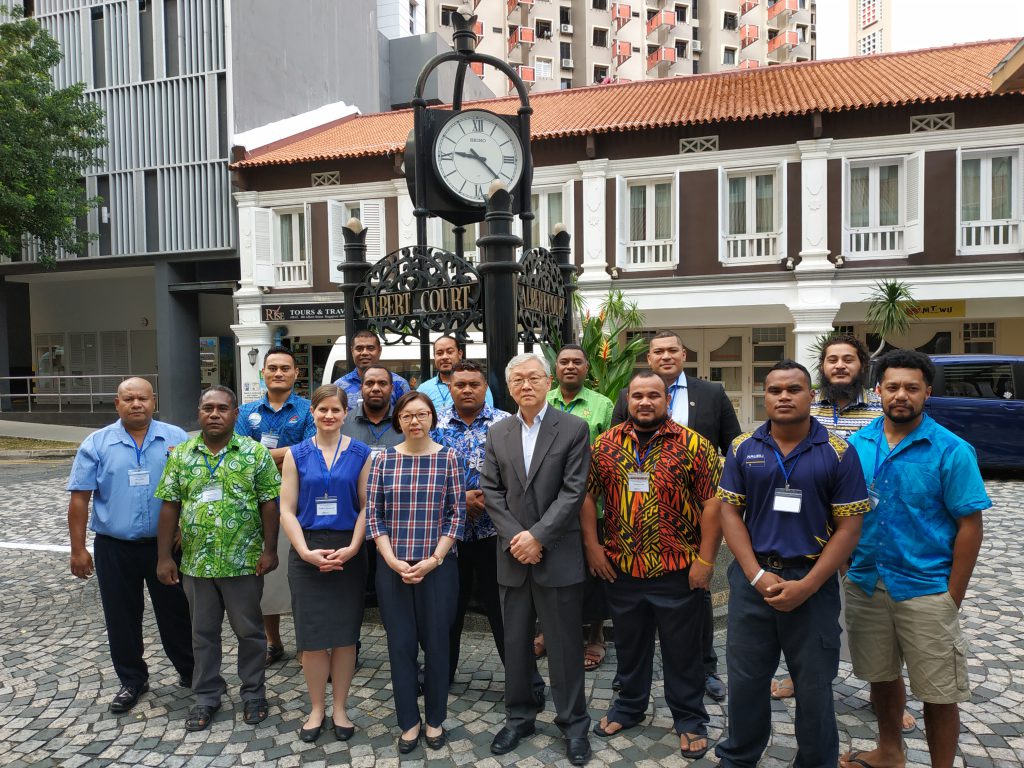Fortnightly Weather Outlook for 16 – 31 July 2019
Singapore, 16 July 2019 – The Southwest Monsoon conditions that have been prevailing over Singapore and the surrounding region since early June 2019 are forecast to continue for the rest of July 2019, and persist until October 2019. During this period, the low level winds are forecast to blow from the southeast or southwest.
2 In the second fortnight of July 2019, the monsoon rain band is forecast to lie over northern Southeast Asia and the northern South China Sea. This is expected to bring generally dry and occasionally windy conditions to Singapore and the surrounding region in the first week of the fortnight. Despite the drier conditions, there could still be a few days of localised short-duration showers at times with thunder over a few areas of the island in the late morning and early afternoon.
3 More rain can be expected in the later part of July 2019. Periods of widespread thundery showers, at times heavy can be expected on two or three days due to large scale wind convergence over Singapore and the surrounding region. In addition, there could be a few days of localised short-duration thundery showers in the late morning and early afternoon. Overall, the rainfall for July 2019 is likely to be slightly below normal.
4 In the second fortnight of July 2019, the daily temperature over Singapore is forecast to range between 25°C and 33°C. The daily maximum temperature could reach a high of around 34°C on some days. On some nights, warm and humid conditions with night-time temperatures of around 28°C are expected, in particular when prevailing winds blowing from the southeast bring warm and humid air from the sea.
5 For updates of the daily weather forecast, please visit our MSS website (https://www.weather.gov.sg), NEA website (www.nea.gov.sg), or download the myENV app, or the MSS’ Weather@SG app.
REVIEW (1 – 15 July 2019)
6 Southwest Monsoon conditions prevailed in the first fortnight of July 2019, and the low level winds were blowing mostly from the southeast or southwest.
7 During the first half of July 2019, Singapore experienced short-duration thundery showers in the late morning and afternoon due to strong solar heating of land areas and large-scale convergence of winds in the surrounding vicinity. Most of the showers fell in the first half of the fortnight. The thundery showers that fell over many areas of the island on 8 July 2019 recorded a daily total rainfall of 51.6mm at Mandai. This was the highest daily total rainfall for July 2019 (as of 15 July 2019).
8 There were several warm days in the first fortnight of July 2019. The daily maximum temperature ranged between 31.1°C and 34.5°C, with the highest daily maximum temperature of 34.5°C recorded at Pulau Ubin on 6 July 2019. There were also a few warm nights where the night-time temperature hovered around 28°C, especially over the southeastern part of the island. The warm nights were due to warm and humid air blown in from the sea by the prevailing southeasterly winds.
9 Below-average rainfall was recorded over many parts of the island in the first fortnight of July 2019. The lowest anomaly of 94% below-average was recorded at Changi.
CLIMATE STATION STATISTICS
Long-term Statistics for July
(Climatological reference period: 1981 – 2010)
| Average daily maximum temperature | 31.3 °C |
| Average daily minimum temperature | 25.0 °C |
| Average monthly temperature | 27.9 °C |
| Average rainfall | 154.4 mm |
| Average number of rain days | 14 |
Historical Extremes for July
(Rainfall since 1869 and temperature since 1929)
| Highest monthly mean daily maximum temperature: | 32.4 °C (1997) |
| Lowest monthly mean daily minimum temperature: | 22.9 °C (1975) |
| Highest monthly rainfall ever recorded: | 527.3 mm (1890) |
| Lowest monthly rainfall ever recorded: | 18.6 mm (1997) |


